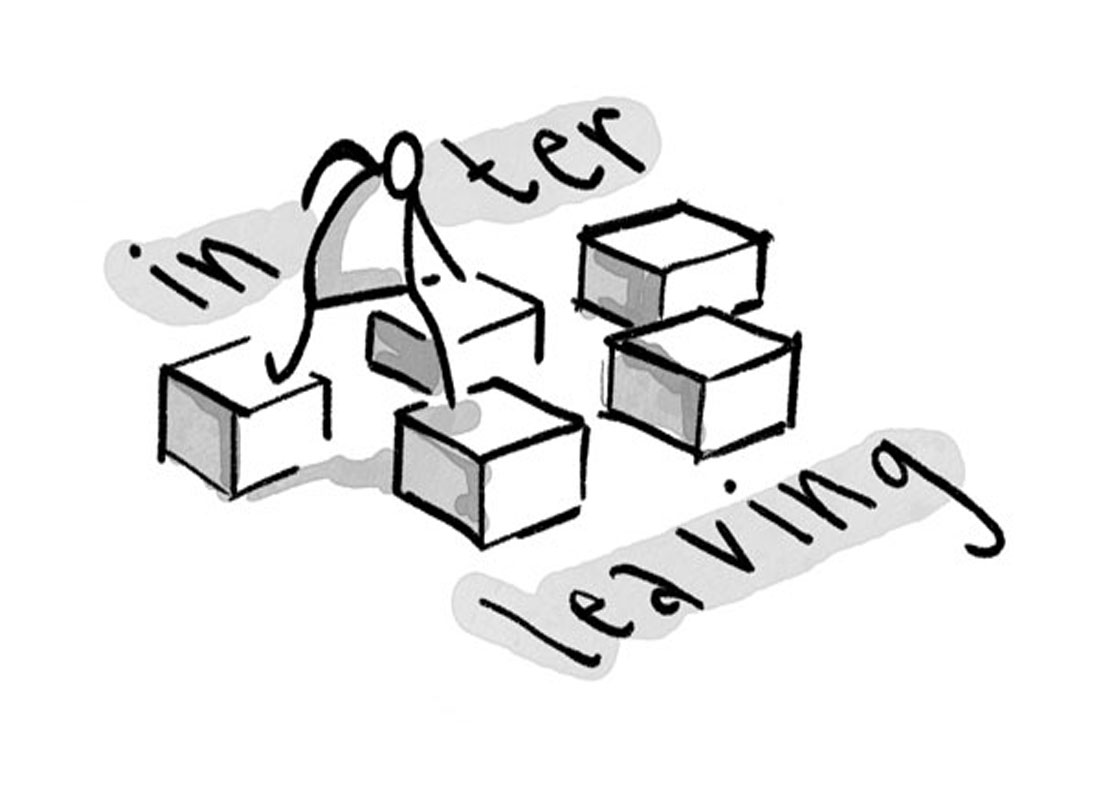Interleaving? Did you make that up?
I know what you’re thinking: “What the %#a*$ is interleaving?” I know! I’ll answer that in a second. First, let’s talk about how some organizations go about developing OKRs.
In my experience it’s not uncommon for groups to split the task into two components, often spread over consecutive days. On the first day the team gathers to create the inspirational Objectives that describe what they want to achieve in the next quarter. Before they put marker to flip chart, especially if they’re new to OKRs, they may have either an in-house expert or an OKR Consultant provide some education on what an objective is, characteristics of effective objectives, etc. With that primer they’re ready to chart their course and off they go to create objectives.
Day two rolls around and it’s time to repeat the process for Key Results. Once again the team listens to a short lecture on what key results are, different types, and how to sure they’re effective. Then the brainstorming begins. Each objective is scrutinized and key results are assigned. By the end of the day the team has a full set of OKRs ready to guide their work for the next twelve weeks.
Get To The Interleaving Part!
Turns out there’s a better way to build OKRs, one that is both more efficient, and likely to produce significantly better results. Here’s where interleaving comes into the equation. Interleaving refers to learning different skills in quick succession. Tennis players, for example, might practice forehands, backhands, and volleys altogether during an interleaving session. For musicians it could mean practicing scales, arpeggios, and chords in the same sitting. This is a different approach to learning for most of us, as we typically rely on “blocked” practice, e.g. the tennis player focuses on forehands one day, backhands the next, and volleys after that.
Interleaving works. In just one study of many, children were taught math the usual way – one technique in a lesson, which they practiced repeatedly. A second group was given assignments which included questions requiring the application of different techniques. On a test the next day, the students who used the interleaving method performed 25% better. A month later they were an astonishing 76% better! Don’t like math? It works in baseball too. Players practiced hitting different pitches (fastballs, curves, sliders) either traditionally (nothing but fastballs for example…then curves) or by interleaving (pitches were mixed). In an actual game, performance was greatly enhanced if practice had been interleaved.[i]
Interleave Your OKR
We can apply this to our development of OKRs. Rather than splitting the task over two (or sometimes more) days, do it all at once. Give your team an overall primer on objectives and key results and let them have at it. This forces our brain to work on two skills at once – objectives and the corresponding key results. Keeping your brains active by searching and reaching for new and novel solutions to both at the same time. Based on the statistics cited above, OKRs in the next cycle will be even better as the team has internalized (through interleaving) what it takes to create powerful objectives and meaningful key results.
As an added, and very significant bonus, what took two days can now be condensed into one, freeing you up to go online to check out the latest interleaving studies!
For more on OKRs, check out our book, Objectives & Key Results, Driving Focus, Alignment, and Engagement with OKR.
[i] See: Kelli Taylor and Doug Rohrer, “The Effects of Interleaved Practice,” Applied Cognitive Psychology, September 2010. Also: Rohrer et al, Journal of Educational Psychology, 2015.
